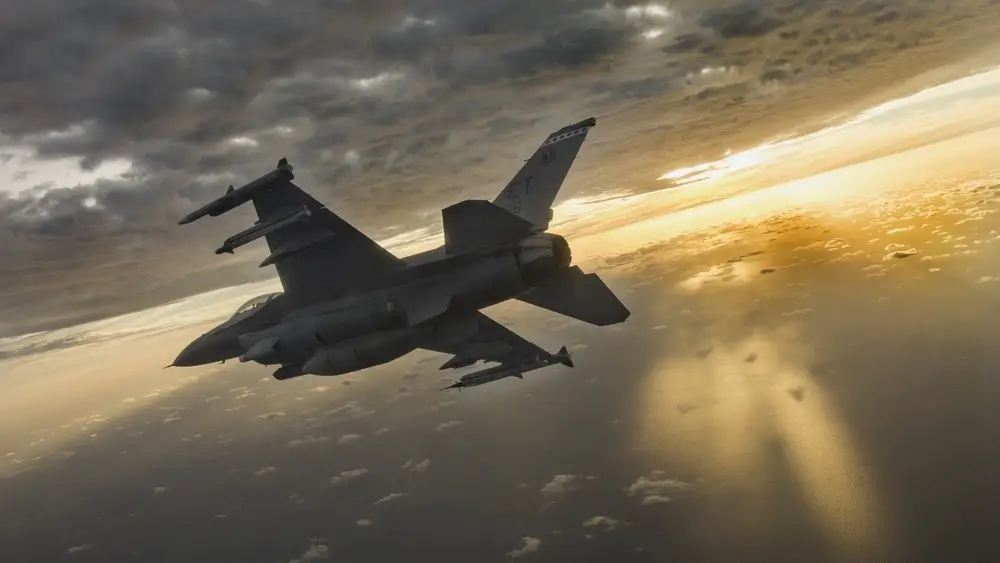6 differences between the Air Force’s F-16 and the Navy’s F-18

A F-16 is flow by Alec “Bulldog” Spencer during a mission at Eglin Air Force Base, Florida, Feb. 14, 2019. The 40 FLTS mission is to execute exceptional fighter developmental test and support to deliver war-winning capabilities. (U.S. Air Force photo by Tech. Sgt. John Raven)
SUMMARY
The F-16 Fighting Falcon and the F/A-18 Hornet are both "lightweight" fighters. Each was intended to complement a larger, heavier fighter (the F-15 for the F-16, the F-14 for the F/A-18). But they also have some big differences. Let's look over some of them.
1. The number of engines
The F-16 has one engine – the F/A-18 has two. This is largely due to their differing operational environments. The F-16 operates from land bases, while the F/A-18 operates primarily from carriers.
Of course, this also bears a lot on survivability. If an F-16 loses an engine, the pilot's gotta grab the loud handle. An F/A-18, on the other hand, can limp back to the carrier.
2. Operating from a carrier
The F-16 is tied to land bases – its landing gear cannot handle the shock of hitting a carrier deck. On the other hand, the F/A-18 can readily shift between a carrier operation and flying from land bases.
3. Initial weapons suite
Did you know the F-16 originally didn't have any radar-guided missiles? Aviation historian Joe Baugher notes that early A/B versions (Blocks 1, 5, 10, and 15) didn't have the ability to fire the AIM-120 AMRAAM or AIM-7 Sparrow. The Block 15 ADF was the first version to carry a radar guided missile, the AIM-7.
The F/A-18, though, could carry radar-guided missiles from day one. This was because while the F/A-18 was replacing an attack plane, it was also intended to help defend the carrier.
4. Pure speed
The F-16 has a top speed of Mach 2.0. The F/A-18 can only reach Mach 1.8. Still, these planes are both very fast when they need to be. But in a pure drag race, the F-16 will win – and by a decent margin.
5. How they refuel
The F/A-18 uses a probe to latch into a drogue. The good news is that it can use just about anyone's tankers – even USAF tankers, which are modified to carry drogues in addition to their booms.
The F-16s in the United States Air Force inventory, though, have a receptacle for the boom from a KC-135, KC-10, or KC-46 to plug into. Part of this is because the Air Force also has to refuel big bombers and cargo planes that need a lot of fuel quickly – and the boom can do just that.
6. Movie career
The F-16 has a clear edge in this one. In the movie "Iron Eagle," the F-16 is arguably the star alongside Louis Gossett, Jr. (Chappy Sinclair) and Jason Gedrick (Doug Masters). The F/A-18 played a role in "Independence Day," but it wasn't quite the star the F-16 was in Iron Eagle.

So, what other differences can you think of between these two planes?
SHARE
